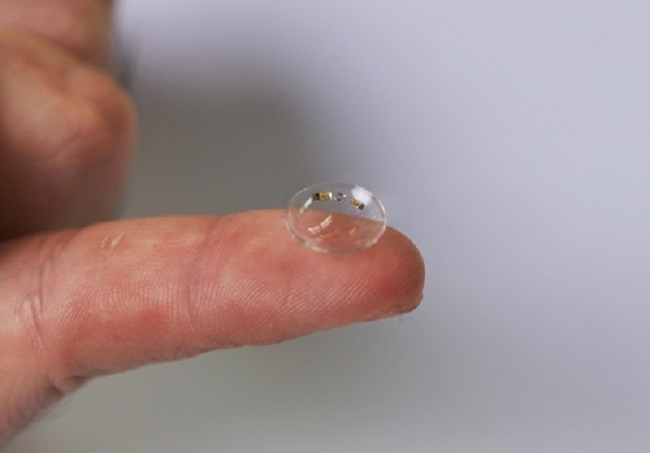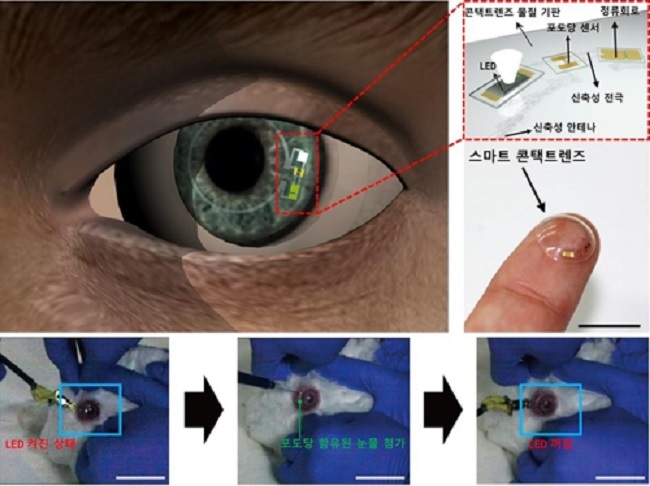
Contact lenses that light up or down depending on the wearer’s blood glucose levels — high blood glucose levels can be an indicator diabetes — have been developed by a joint research team from the Ulsan National Institute of Science and Technology (UNIST) and Sungkyunkwan University.
SEOUL, Jan. 26 (Korea Bizwire) — Contact lenses that light up or turn off depending on the wearer’s blood glucose levels — high blood glucose levels can be an indicator of diabetes — have been developed by a joint research team from the Ulsan National Institute of Science and Technology (UNIST) and Sungkyunkwan University.
Named “wireless smart contact lens”, a detailed report of the team’s innovation was published in the academic journal Science Advances.
Blood tests are typically used to diagnose diabetes, but the recent discovery that blood glucose levels can be measured by analyzing tears has led to extensive research into developing contact lenses that can perform the same diagnostic function.
The wireless smart contact lenses are constructed using the same material incorporated into commercial soft contact lenses. Identical in appearance to a standard market product, the only visible feature that gives away their enhanced capabilities is a micro LED display that stays lit up when blood glucose levels remain normal.

UNIST professor Park Ji-hoon said, “The electrode and base of the wireless smart contact lens are see-through and thus do not present an obstacle to the wearer’s vision.” (Image: UNIST)
Both the micro LED display and a “high-sensitivity blood glucose sensor” attached to the inner surface of the contact lens are powered by wirelessly transmitted electricity.
UNIST professor Park Ji-hoon said, “The electrode and base of the wireless smart contact lens are see-through and thus do not present an obstacle to the wearer’s vision.”
When blood glucose levels fluctuate, the sensor is triggered, and the micro LED display is toggled accordingly.
The research team tested the technology on a rabbit and reported that the furry animal had experienced no signs of discomfort while the contact lens was in place. After artificially increasing the test subject’s blood glucose levels, the contact lens correctly detected the alteration and deactivated the lit micro LED display.

Both the micro LED display and a “high-sensitivity blood glucose sensor” attached to the inner surface of the contact lens are powered by wirelessly transmitted electricity. (Image: UNIST)
In addition, the contact lens did not generate any heat while in use, and the blood glucose sensor and micro LED display were left intact even after coming into contact with other substances generated in the rabbit’s eye.
Regarding their success, professor Park Jang-woong said the development of the contact lens has opened the door to new potential “wearable electronic devices” built with materials similar to those used in soft contact lenses. He also remarked that modern technology had moved one step closer to making devices that once belonged to the realm of science fiction an everyday reality.
Kevin Lee (kevinlee@koreabizwire.com)







Hello I would love to try a pair of your invention contact so have astigmatism in my left eye bad it’s like +3.00 please help if you can make them for people with astigmatism thank you doctor